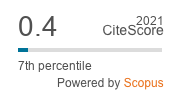Population dynamics of Melanagromyza obtusa (Malloch) (Diptera: Agromyzidae) and its natural parasitization in Pigeonpea
Keywords:
Melanagromyza obtuse, parasitization, population, pigeonpea pod flyAbstract
Population dynamics of pigeonpea pod fly Melanagromyza obtusa (Malloch) and its natural parasitization on Cv. ICP-8863 (Maruthi) studies revealed that the larval population of attained a peak level during 51st standard meteorological week (SMW) with 60 larvae per 100 pods and pupal population on 4th SMW with 47 pupae per 100 pods. During the same period pod damage was at its peak with 81.00 per cent and causing grain damage 54.34 per cent, which subsequently declined to 5.18 per cent during 10th SMW. During the investigation, parasitoids belonging to six families could be recorded on the immature stages of the pod fly. The peak level of natural larval, pupal and total [= overall (larvae + pupae)] parasitization of pod fly was observed during 2nd SMW with 60.00, 51.61 and 55.81 per cent, respectively. Analysis of weather parameters relationship indicated negative correlation between larval population and grain damage vis-a-vis maximum temperature and evaporation. The correlation matrix among larval and pupal population; pod and grain damage; and larval, pupal and total parasitization exhibited positive correlation.Â


